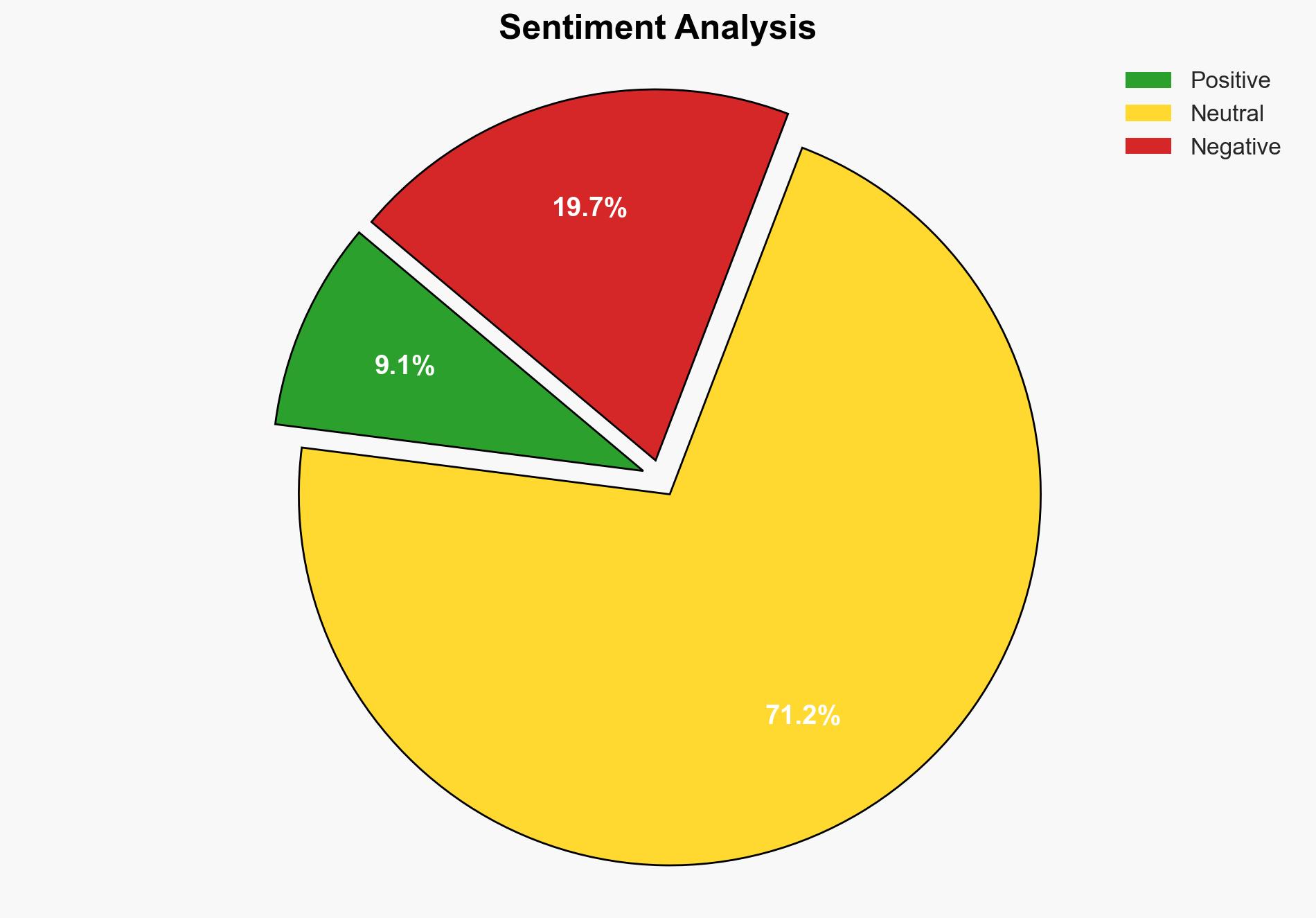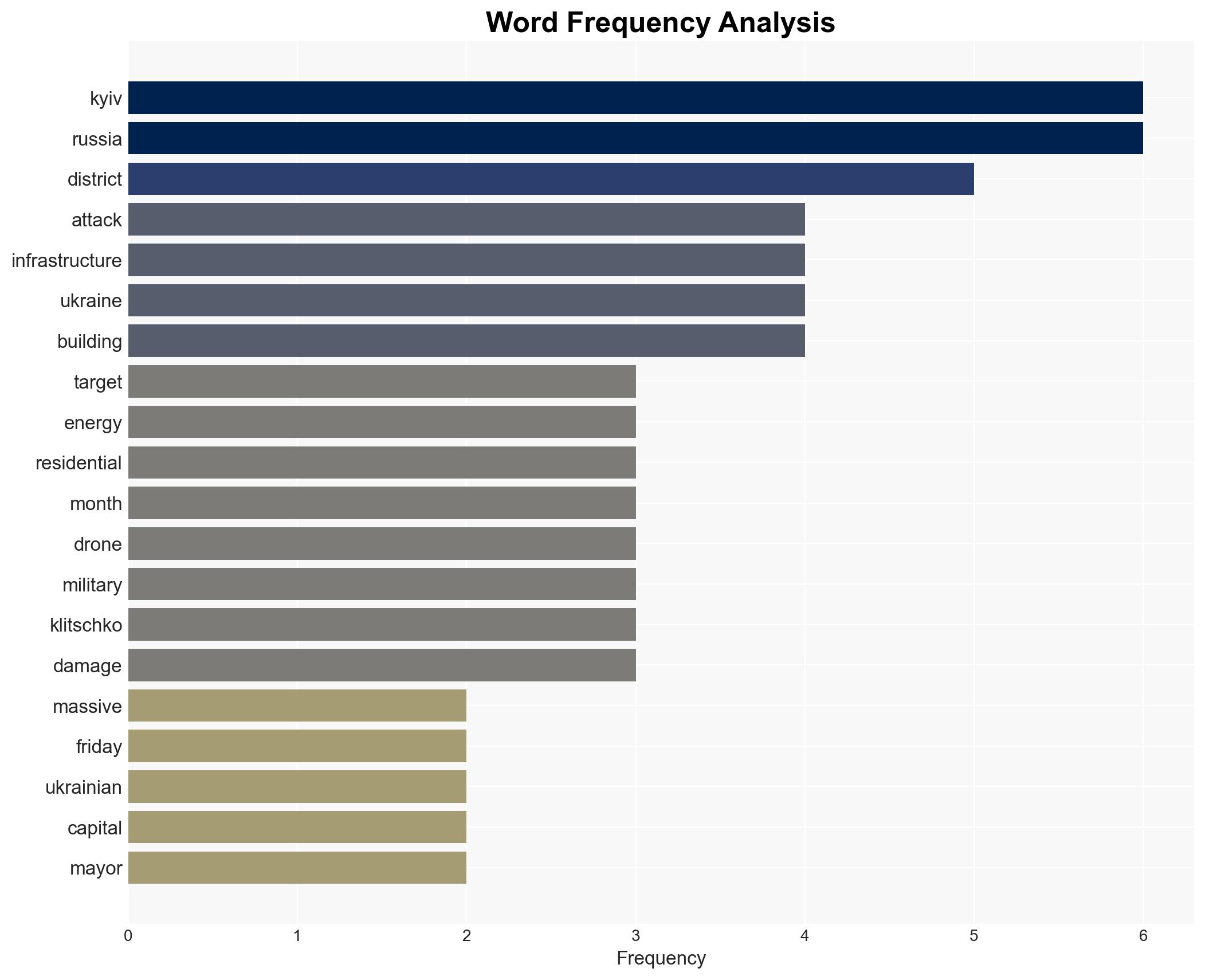Ukraine capital under massive attack Kyiv mayor – Digital Journal
Published on: 2025-11-14
AI-powered OSINT brief from verified open sources. Automated NLP signal extraction with human verification. See our Methodology and Why WorldWideWatchers.
Intelligence Report: Ukraine capital under massive attack Kyiv mayor – Digital Journal
1. BLUF (Bottom Line Up Front)
With a high confidence level, the most supported hypothesis is that Russia is intensifying its military strategy to degrade Ukraine’s critical infrastructure, aiming to weaken Ukraine’s resilience and morale ahead of winter. Recommended actions include bolstering Ukraine’s air defense capabilities and enhancing international diplomatic pressure on Russia.
2. Competing Hypotheses
Hypothesis 1: Russia is deliberately targeting Ukraine’s critical infrastructure to weaken its energy capabilities and civilian morale as winter approaches. This aligns with recent patterns of attacks on energy facilities and residential areas, suggesting a strategic effort to create widespread disruption.
Hypothesis 2: The attacks are a response to increased international pressure and sanctions against Russia, serving as a demonstration of military capability and resolve. This hypothesis considers the timing of the attacks following new sanctions by Canada and the European Commission.
Hypothesis 1 is more likely due to the consistent pattern of infrastructure targeting, which aligns with strategic military objectives rather than solely retaliatory actions.
3. Key Assumptions and Red Flags
Assumptions: It is assumed that Russia has the capability and intent to sustain these attacks through the winter. It is also assumed that Ukraine’s air defense systems are partially effective but require reinforcement.
Red Flags: Potential misinformation regarding the scale and impact of the attacks could be used to manipulate international perception. The lack of independent verification of damage reports could indicate information control by either side.
4. Implications and Strategic Risks
The continued targeting of infrastructure poses significant risks of humanitarian crises, with potential heating and electricity outages during winter. Politically, this could strain Ukraine’s alliances if perceived as unable to protect its capital. Economically, prolonged attacks could destabilize Ukraine’s economy, affecting global markets.
Escalation scenarios include increased cyberattacks on Ukrainian and allied nations’ infrastructure, further sanctions leading to economic retaliation by Russia, and potential military escalation in the Donetsk and Luhansk regions.
5. Recommendations and Outlook
- Enhance Ukraine’s air defense systems through international military aid to mitigate future attacks.
- Increase diplomatic efforts to pressure Russia into a ceasefire, leveraging recent sanctions as negotiation tools.
- Best-case scenario: Successful diplomatic intervention leads to a ceasefire and stabilization of the situation.
- Worst-case scenario: Escalation of attacks leads to a humanitarian crisis and broader military conflict.
- Most-likely scenario: Continued sporadic attacks with sustained international support for Ukraine, leading to a protracted conflict.
6. Key Individuals and Entities
Vitaly Klitschko (Kyiv Mayor), Mykola Kalashnyk (Head of Kyiv Regional Military Administration), Tymur Tkachenko (Head of Kyiv’s Military Administration).
7. Thematic Tags
Regional Focus: Eastern Europe, Ukraine, Russia, Military Conflict, Infrastructure Attacks
Structured Analytic Techniques Applied
- Causal Layered Analysis (CLA): Analyze events across surface happenings, systems, worldviews, and myths.
- Cross-Impact Simulation: Model ripple effects across neighboring states, conflicts, or economic dependencies.
- Scenario Generation: Explore divergent futures under varying assumptions to identify plausible paths.
- Network Influence Mapping: Map influence relationships to assess actor impact.
Explore more:
Regional Focus Briefs ·
Daily Summary ·
Methodology





